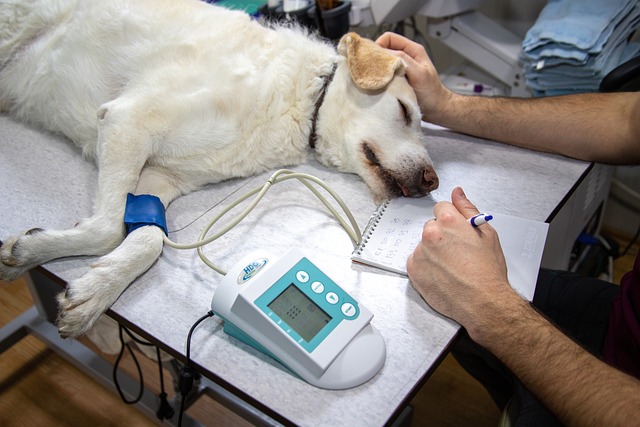Start Veterinary Assistant Training in the US Today
Embarking on a career as a veterinary assistant can be an exciting and rewarding journey for animal lovers. If you're passionate about working with pets and supporting veterinary professionals, starting your veterinary assistant training in the United States is the first step towards a fulfilling career. This article will guide you through the process of becoming a veterinary assistant, exploring training options, and highlighting the importance of this role in animal healthcare.

What does a veterinary assistant do?
Veterinary assistants play a crucial role in animal healthcare facilities, supporting veterinarians and veterinary technicians in their daily tasks. Their responsibilities typically include:
-
Assisting with animal restraint during examinations and procedures
-
Preparing examination rooms and surgical suites
-
Cleaning and sterilizing equipment and instruments
-
Feeding and exercising animals under care
-
Monitoring and reporting changes in animals’ conditions
-
Assisting with laboratory sample collection and processing
-
Maintaining accurate medical records
-
Providing basic grooming services
These diverse tasks require a combination of technical skills, compassion for animals, and the ability to work effectively in a fast-paced environment.
How can I start veterinary assistant training?
To begin your journey as a veterinary assistant, you’ll need to complete a comprehensive training program. There are several options available in the United States:
-
Vocational schools and community colleges: Many institutions offer certificate or associate degree programs in veterinary assisting. These programs typically take 6-24 months to complete and provide hands-on training.
-
Online courses: For those with busy schedules or limited access to in-person programs, online veterinary assistant training courses offer flexibility and convenience. These programs often combine virtual lectures with hands-on externships at local veterinary clinics.
-
On-the-job training: Some veterinary clinics offer apprenticeship-style training programs where you can learn while working. This option allows you to gain practical experience while earning an income.
-
High school programs: Some high schools partner with local veterinary clinics to offer vocational training programs for students interested in animal healthcare careers.
When choosing a training program, ensure it’s accredited by a recognized organization such as the National Association of Veterinary Technicians in America (NAVTA) or approved by your state’s veterinary medical board.
What are the benefits of online veterinary assistant training?
Online veterinary assistant training programs have gained popularity due to their flexibility and accessibility. Some benefits of choosing an online program include:
-
Flexible scheduling: Study at your own pace and balance training with work or family commitments.
-
Lower costs: Online programs often have lower tuition fees and eliminate commuting expenses.
-
Access to diverse resources: Many online programs offer interactive learning tools, video demonstrations, and virtual simulations.
-
Networking opportunities: Connect with students and instructors from across the country.
-
Self-paced learning: Review challenging concepts as often as needed to ensure thorough understanding.
While online training offers many advantages, it’s crucial to choose a program that includes hands-on experience through externships or in-person lab sessions to develop practical skills.
What skills are essential for a successful veterinary assistant?
Becoming a successful veterinary assistant requires a combination of technical knowledge and soft skills. Some essential skills include:
-
Animal handling: Ability to safely and confidently work with various animal species.
-
Communication: Clear communication with veterinarians, colleagues, and pet owners.
-
Attention to detail: Accurate record-keeping and careful monitoring of animals’ conditions.
-
Emotional stability: Ability to remain calm in stressful situations and handle emotional aspects of animal care.
-
Physical stamina: Capacity to stand for long periods and lift or restrain animals when necessary.
-
Basic medical knowledge: Understanding of animal anatomy, physiology, and common medical procedures.
-
Time management: Efficiently juggling multiple tasks in a fast-paced environment.
-
Teamwork: Collaborating effectively with veterinarians, technicians, and other staff members.
Developing these skills through comprehensive training and hands-on experience will set you up for success in your veterinary assistant career.
How does veterinary assistant training compare to other healthcare assistant programs?
While veterinary assistant training shares some similarities with other healthcare assistant programs, there are notable differences:
| Program | Focus | Duration | Typical Work Environment |
|---|---|---|---|
| Veterinary Assistant | Animal healthcare | 6-24 months | Veterinary clinics, animal hospitals |
| Medical Assistant | Human healthcare | 9-24 months | Doctor’s offices, clinics, hospitals |
| Dental Assistant | Oral healthcare | 9-12 months | Dental offices, clinics |
| Pharmacy Technician | Medication dispensing | 4-24 months | Pharmacies, hospitals |
Prices, rates, or cost estimates mentioned in this article are based on the latest available information but may change over time. Independent research is advised before making financial decisions.
While all these programs prepare assistants for healthcare-related roles, veterinary assistant training uniquely focuses on animal care, requiring specialized knowledge of various species, their anatomy, and specific medical needs.
In conclusion, starting your veterinary assistant training in the US today can open doors to a fulfilling career in animal healthcare. Whether you choose an in-person program, online training, or on-the-job learning, developing the necessary skills and knowledge will prepare you for this rewarding profession. With dedication and passion for animal care, you’ll be well on your way to becoming an integral part of the veterinary healthcare team.




